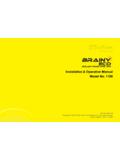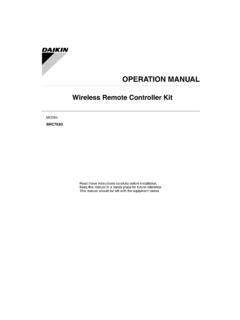Transcription of First Watt model F4 Operation and Service Manual
1 First Watt model F4 Operation and Service ManualIntroductionAnyone paying attention is aware that First Watt makes unusual amplifi ers with the emphasis on performance at low power levels. Here s another F4 is Class A impedance converting amplifi er, having no voltage gain or feedback. Its input impedance is 47,000 ohms, and its output impedance is ohms. It is suitable for driving a high sensitivity loudspeaker with the output voltage of a preamp or other line-level audio source. It is also useful with a less sensitive loudspeaker in a bi-amped confi guration where it takes input from the output of a conventional amplifi a stereo amplifi er with single-ended inputs and outputs, it will deliver up to 25 watts into 8 ohms with a damping factor of 40. It will do 50 watts into 4 ohms, and as a mono-block amplifi er with parallel inputs and outputs, it will do about 100 watts into 2 a mono-block amplifi er with balanced inputs and outputs the power output rating is 100 watts into 8 ohms at 1%, and the damping factor is amplifi er operates Class A to 25 watts (50 peak), and the distortion is 2ndand 3rd harmonic in character, rising or declining in linear proportion to the output power.
2 The amplifi er has a direct coupled input and output, with a dB rolloff around .1 Hz and 200 KHz. It does a clean square wave at 100 combination of a simple Class A circuit operated without feedback and the good objective performance gives us a superb sounding amplifi er. The low distortion, bandwidth extension, and high damping results in midrange clarity, treble detail, and control on the bottom end. While these are available from most good solid state amplifi ers, the F4 also brings depth, imaging, midrange warmth and top-end , it is one of the best sounding amplifi ers, and if you can live with unity voltage gain in your amplifi er, it is possibly your best amplifi er is designed for fairly unusual applications:1) You can drive it directly with a line source such as a this amplifi er presupposes that you have a preamplifi er or other source with adequate voltage and/or loudspeakers suffi ciently sensitive to be able to work with the voltage and gain you would think offhand that this might be a real problem, but it is my experience that this is often not the , you will fi nd that the more sensitive drivers deliver good volume levels at quite low wattage.
3 My Lowther DX55 s (93 dB/watt) mounted in Alerion enclosures adequately fi ll my 11,000 cubic foot listening room with about 5 volts (the equivalent of a 4 watt amplifi er). I can achieve good levels with headroom to spare with my phono stage or DAC feeding an X1 preamp, which has a maximum of 14 dB I lived in an apartment, I could get complaints from my neighbors. Thanks to the dutiful efforts of John Atkinson at Stereophile, I have been able to examine the maximum gain and output voltage of the tube and solid state preamps he has measured over the last 20 years or so ( ).Virtually all active line stages achieve adequate gain and voltage swing to drive the above combination. Basically you need a linestage with about 12+ dB gain and 10+ volt maximum output. This includes tube products from VTL, Hovland, ARC, Cary, McIntosh, CJ, EAR, MF, BAT, Lamm, and Rogue.
4 It includes solid state preamps from Pass Labs, Krell, McIntosh, Levinson, Halcro, Naim, Boulder, Ayre, Bryston, Threshold, McCormack, Linn, Sutherland, and on and your loudspeaker is less effi cient, then you need more gain from your source and/or more gain and voltage swing from your linestage. As you go in sensitivity below 87 dB, you will want to consider 100 watt balanced mono-block use, with a preamp capable of swinging 14 volts per balanced output and having a gain of 20+ your loudspeaker increases in sensitivity, you need less gain and voltage swing. You can also use active crossover networks to drive multiple F4 s as shown below. A number of crossovers on the market incorporate voltage gain and high voltage swing (a prime candidate being the Pass Labs XVR1, which can swing the full voltage capability of the F4).2) You can use it with a low wattage integrated or tube amplifi er in a biamplied systemThere are a number of popular tube integrated amplifi ers on the market, the so-called Flea Watt amplifi ers which don t have much juice, but offer a warm tubey sound which is much prized.
5 These amplifi ers are good candidates for Operation with an F4 in a setup where the loudspeakers have two separate sets of input terminals, one for the woofer and one for the midrange/tweeter. In such a system the F4 is used to drive the bottom end, where it offers superior damping and higher current, and the fl ea watt amplifi er drives the mid and top end, unburdened by the effort of driving the woofer but preserving the character of the tube amp. It is particularly convenient that the F4 is close to unity gain, which provides close level matching between the bottom and top. (In the diagram below, it is assumed that crossover networks are incorporated into the woofer and mid/high end speakers)You can take advantage of the same arrangement if you have drivers and you want to make your own custom passive crossovers:An alternative arrangement results when you create your own passive crossover networks using resistors as loads and feeding the results to F4 channels.
6 The networks behave more ideally driving resistors than the complex impedance of loudspeakers, and the resistor values can be set over a wide range of The loudspeaker drivers themselves benefi t from the direct connection to the low output impedance of the amplifi ) You can use it with a low wattage integrated or tube amplifi er in a stand-alone system for higher output currentThere will be occasions where the loudspeaker load is too low for optimal performance from a fl ea watt, and in this case you can consider F4 s for the purpose of getting as much as 100 watts into 2 ohms per mono-block. In this arrangement you can also load the fl ea watt amp (not shown here) with a resistive or other load which elicits the best performance from initial setup of the amplifi er is very straight-forward. Place the amplifi er in a well-ventilated location, as it draws about 160 watts during Operation and requires as much opportunity to cool itself as possible.
7 You should be able to put your hands on the heat sink during Operation . If you can t do this for 5 seconds or so, they need more the front panel there are two blue LED lights, one for each channel (or each half of a mono-block), indicating power to the channel. On the rear panel you will fi nd a pair of RCA inputs, and XLR balanced input, speaker outputs, a fuse holder, an AC power receptacle, and on/off label will indicate a serial number and also what AC line voltage the amplifi er is set for. If the voltage is 120 VAC, then the fuse value will be a 3AG slow blow fuse rated at amps. If the voltage is 240 VAC, then the fuse will be rated at amps. Do not substitute a larger value fuse. Contact First Watt if you have any amplifi er can be run in three confi gurations. There is one way to use the amplifi er in stereo. There are two ways you can run the amplifi er as a mono-block, either by paralleling the inputs and outputs for more current and less distortion, or by driving the two channels from a balanced m assuming that you know how to attach the speaker cables to the 5 way output connectors provided.
8 Please make all the connections with the amplifi er power switch in the OFF position. Stereo OperationFor two channel Operation , input signal is connected to the RCA inputs, ignoring the XLR input. (Unlike some other designs from First Watt or Pass Labs, there are no jumpers on the unused XLR inputs.) The output connections to the loudspeakers are made through the gold plated brass 5 way connectors. The red(top) connection is positive and the black (bottom) is negative. In this amplifi er the black banded output connectors are connected directly to signal Balanced OperationIn mono balanced Operation , you can achieve up to 100 watts output into an 8 ohm load. The amplifi er is driven by a balanced source, either through the two RCA inputs or the balanced XLR connector. The left channel (as seen from the front) is presumed to have the positive phase, so the positive input appears either on the left channel RCA or Pin 2 of the XLR connector.
9 The right channel gets the negative phase input on its RCA or on Pin 3 of the XLR 1 of the XLR connector is groundPin 2 is 3 is you look carefully at the connector you will see tiny labels next to the pin jumpers or shorting plugs are output to the speakers occurs through the top red banded brass connectors on the two output 5 way binding posts. The left channel (as seen from the front) has the positive output, and the right channel has the negative. The bottom black banded connectors are signal ground, and are not used. The positive speaker lead goes to the left red band, and the negative speaker lead goes to the right red Parallel OperationIn mono parallel Operation , you can achieve up to 100 watts output into a 2 ohm load. The amplifi er is driven by a single-ended source, through the two RCA inputs in parallel. The easiest way to do this is through a male RCA cable going into one of the RCA inputs with a jumper between pins 2 and 3 of the XLR input connector, which parallels the two inputs.
10 This jumper is supplied with the amplifi you look carefully at the connector you will see tiny labels next to the pin parallel Operation of the two channels as one, you must connect the outputs left positive to right positive either at the connectors themselves or by bi-wiring the loudspeaker with two sets of cables. Remember that the positive outputs have a red black banded output connectors are already connected together to ground, so you can make this connection externally or not as you everything connected up and the source equipment powered up fi rst, you can proceed to turn on the power switch to the amplifi er. Turn-on and turn-off thumps and noise are small in this amplifi er, and should not present any hazard to delicate drivers. At this point you should be able to listen to music. This amplifi er has less gain than most, but at 15 watts rating, it should not need it.
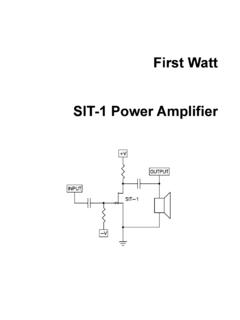
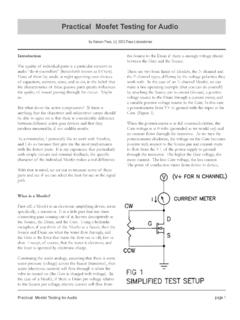
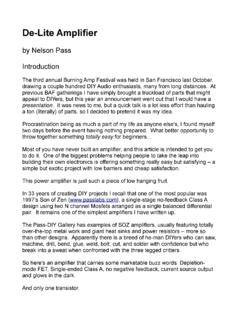
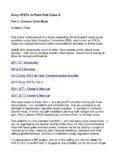

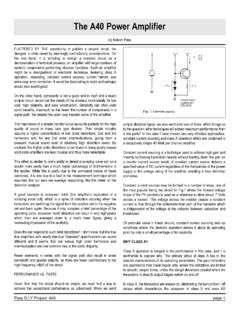
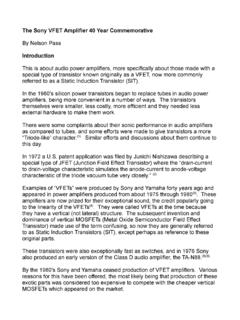
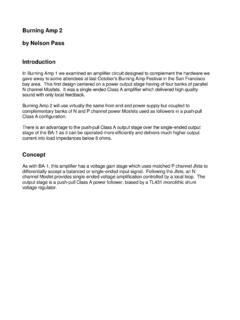
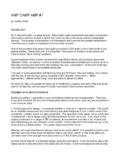
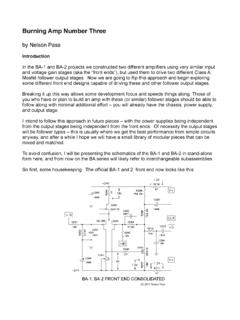
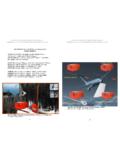
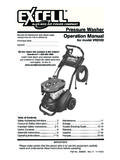
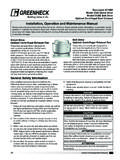
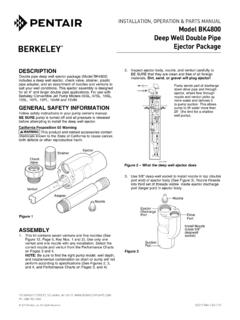
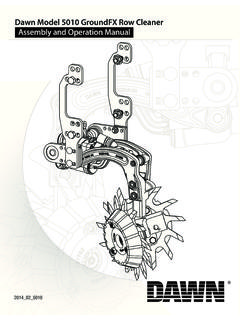
![Ultrameter Operation Manual Model 4P - [Official] …](/cache/preview/5/6/3/b/4/c/a/c/thumb-563b4cac4eb8bcdcacf744e42dc2ead6.jpg)
